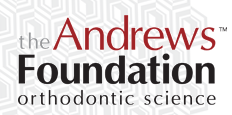6Elements
THE SIX ELEMENTS ORTHODONTIC PHILOSOPHY
Orthodontists can do more than straighten teeth and provide a nice smile to their patients. Orthodontic treatment can include three dimensional jaw movements and correction of dental arch discrepancies that result in improved health and function of the orofacial complex. New treatment goals that are both optimal and universal allow for more comprehensive diagnosis, treatment planning and treatment than previously possible. The new treatment goals categorically include: arch (teeth, borders, and supporting tissues), AP jaw positions, BL jaw positions, jaw heights, CHW prominence, and occlusion. When these six areas are treated to optimal Six Elements’ standards, orofacial harmony will be maximized for the patient. Orofacial harmony is a condition in which the position of the teeth and jaws contribute maximally to the overall health, function, and appearance of the individual. These new treatment goals are collectively called the Six Elements of Orofacial Harmony™. The new landmarks and referents used for measuring them form the basis for a new 3D, positionally correct classification system. In addition, there are proven treatment strategies for effectively and efficiently attaining them; they are called the Six Elements Rules for Treatment™. Together, the new goals, rules and classification system comprise the 6E Orthodontic Philosophy. The 6E Orthodontic Philosophy is orthodontic’s most complete and scientific orthodontic philosophy. Dr. Lawrence F. Andrews and Dr. Will A. Andrews, along with several highly qualified colleagues, have been using the 6E Orthodontic Philosophy clinically as well as teaching orthodontists and oral and maxillofacial surgeons about the 6E Orthodontic Philosophy for over 20 years. There is a growing list of independent studies that support the philosophy (see references).
FUNDAMENTAL TENETS OF THE 6E ORTHODONTIC PHILOSOPHY
-
Treatment standards are the Six Elements of Orofacial Harmony, or as close to them as the patient will allow.
-
The Six Elements Classification System™ is used exclusively.
-
For Six Elements Orthodontists, pre-treatment interarch molar relationship is considered to have no diagnostic value.
-
There are universal and optimal treatment goals for teeth and jaws.
-
Full-size archwires are not needed with the 6E Orthodontic Philosophy.
-
In profile, the forehead is considered to be part of the face.
-
In profile, the maxillary incisors (when bared) are considered to be a part of the face.
-
Profile photographs with the forehead and maxillary incisors bared are important records.
-
The WALA Ridge is the primary landmark for lateral and anterior arch borders.
-
Headfilms are taken in centric occlusion (C), in repose, with a vertically-positioned cassette and a profile shield.
-
The head's frontal plane, the forehead's prominence and inclination are used for deciding AP tooth and jaw treatment goals.
-
Normal from beyond normal orofacial conditions are clearly differentiated.
-
The 10-Hour Force Theory© can be used for generating non-reciprocal force effects.
-
The Three Arch-Line Concept© is essential for routinely achieving the Six Keys to Normal (Optimal) Occlusion.
-
Fully-programmed posterior brackets that match the mesiodistal translation needs intended in each arch are routinely prescribed.
-
All patients are treated as though they have a high susceptibility to occlusion-related TMD.
-
The Symmetrical-Arch Concept©.
-
The Parallel-Growth Theory©.
-
Overcorrection and settling are routine finishing procedures.
1998-2025 Copyright



